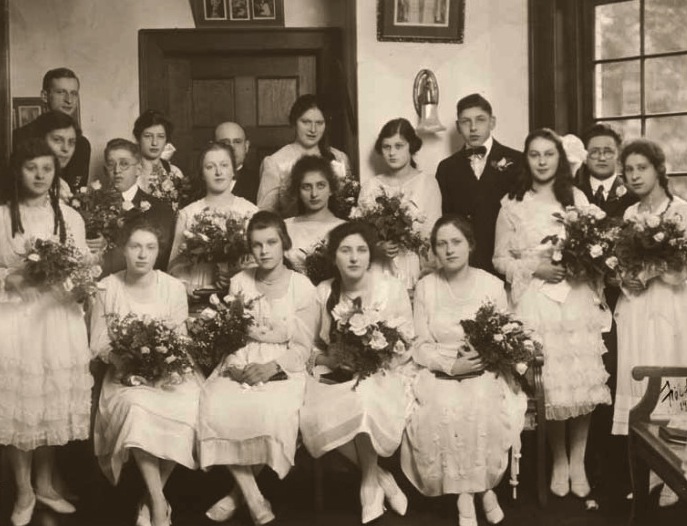
Graduating confirmation class at Temple De Hirsch Sinai, Seattle, 1901
By Noam Pianko
Archival records from Temple De Hirsch Sinai, Seattle’s largest Reform synagogue, include over 29 boxes of photos, documents, and other records that span from 1883 to 2001. One of the most fascinating parts of the collection is a series of pamphlets recording the Temple’s yearly confirmation ceremony, beginning in 1901. Studying these early programs sheds light on the process of religious reform and acculturation that characterized Reform Judaism in Seattle and around the United States.
The Confirmation Ceremony
Having already celebrated a Bar or Bat Mitzvah, why would Reform Jews celebrate confirmation, as well? The order of the services, as recorded in Temple De Hirsch Sinai’s confirmation programs, provides insights into the meaning of this ceremony.

A portion of “The Order of Services” page in the 1901 Temple
De Hirsch Ceremony of Confirmation Program
The centrality of the Decalogue in the service is not random. The confirmation service was held in early June, which links it with Shavuot, the holiday associated with the giving of the Torah at Mt. Sinai. (While Shavuot likely set the broad theme for the confirmation service, the actual date selected was the first Sunday after the holiday, according to the Hebrew calendar.)
Confirmation reframed the Jewish holiday of Shavuot, from a binding obligation to follow certain ritual actions to a declaration of the divine principles that are encapsulated in the Ten Commandments. This focus on belief is so central to the confirmation ceremony that students participated in an examination of their knowledge as part of the ritual.
The aesthetics and order of the service owe a great deal to the desire to shape the new Jewish “congregation” along American lines. The service was shaped around performances of classical music, often compositions intended for Christian worship. The structure of the ritual closely resembled that of a graduation ceremony, with a processional, presentation of diplomas, valedictory address, and greetings from specific clubs. The model of membership within the Jewish community that confirmation represents was clearly shaped by the American ritual of graduation — a ritual celebrating the mastery of content knowledge presented through a specific curriculum.
Confirmation and American Reform Judaism
The rise of the confirmation demonstrates the influence of Protestant definitions of religion on Jewish thought. Confirmation reshaped Jewish theology to fit the expectations of creed-based religious traditions that equated religion with theological and ethical commitments. Indeed, confirmation during this time period existed as a key coming-of-age moment for Catholics and for several Protestant denominations, as well (including German Lutherans, the majority religion in the German land that sparked the first Reform communities in the early decades of the nineteenth century).
The confirmation program offered a set of religious practices that meshed perfectly with the expectations for Christian coming-of-age ceremonies that were popular in the United States at this time. A Bar Mitzvah welcomed boys at the age of 13 because its primary responsibility was to fulfill prescribed ritual commandments. The confirmation ceremony provided a new ritual that would affirm a commitment to the Jewish tradition within the vocabulary and structure of American religious traditions and graduation celebrations.
In my Spring 2014 American Jewish History class, I asked students to use the archives at the University of Washington Special Collections to research local Jewish history and to build digital stories based on the archival material. I created this post as a sample for my students. Thanks to the New Media in Jewish Studies collaborative for its support of this project.
View the multimedia projects students created for the American Jewish History course.

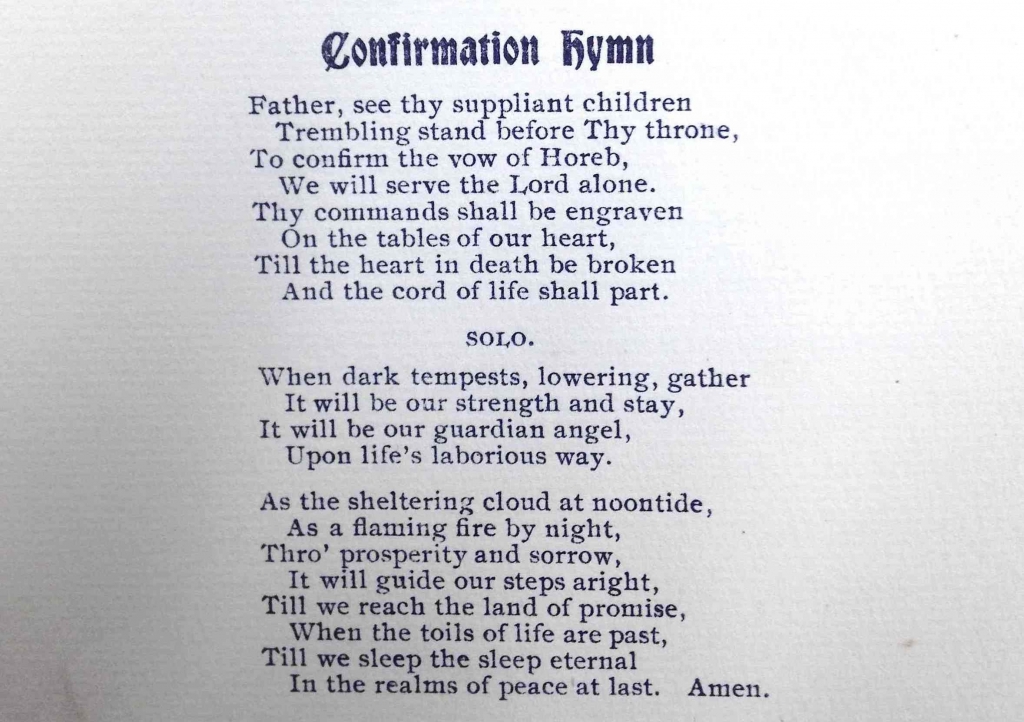
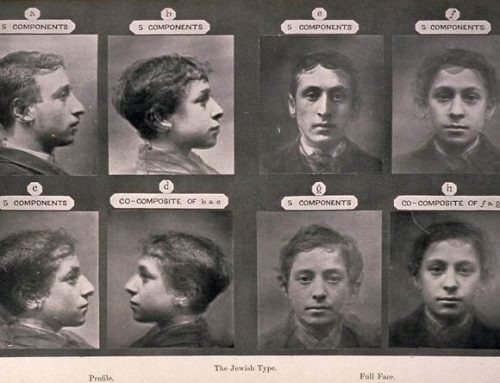
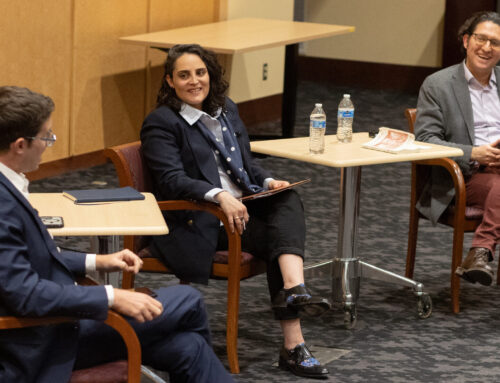

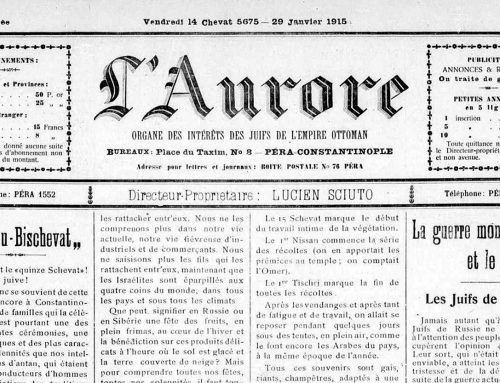
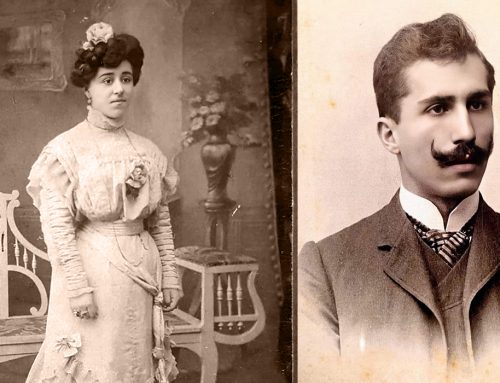
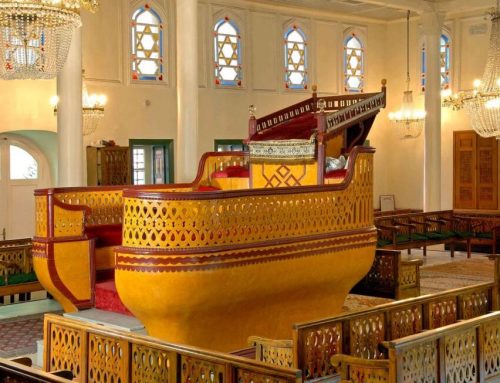
Professor Planko, I was in Rabbi Abba Hillel Silver’s 1960 confirmation class in Cleveland, Ohio. I’d be happy to have a discussion with you, just not like this. My email is above